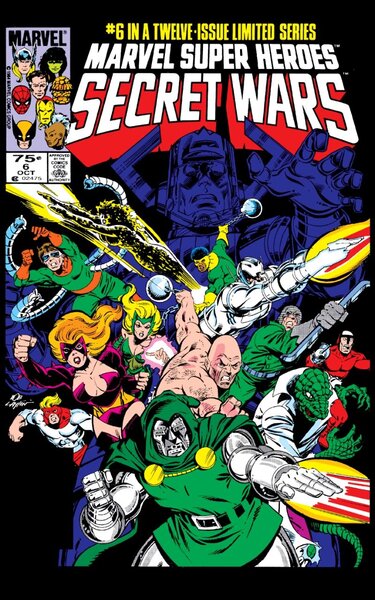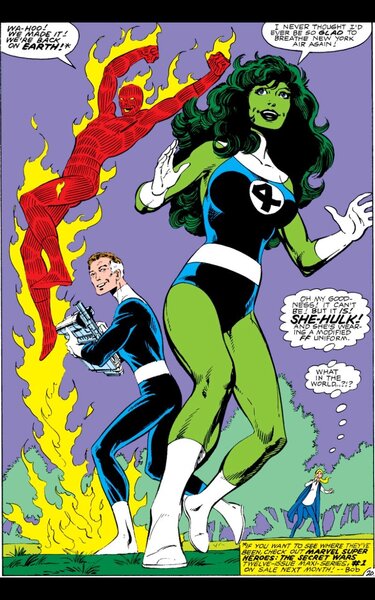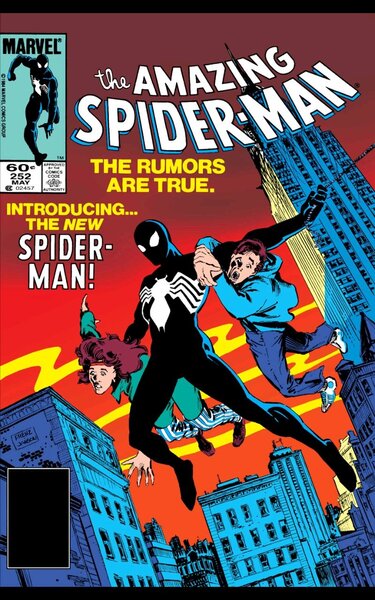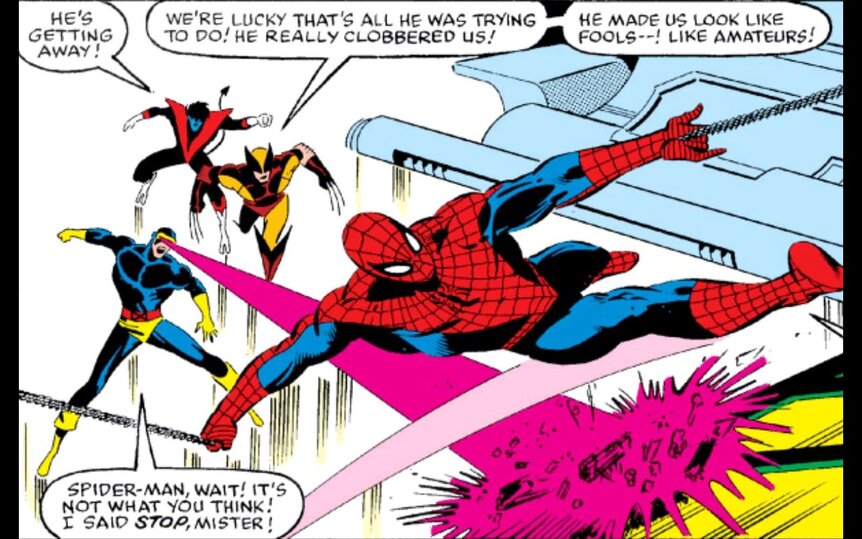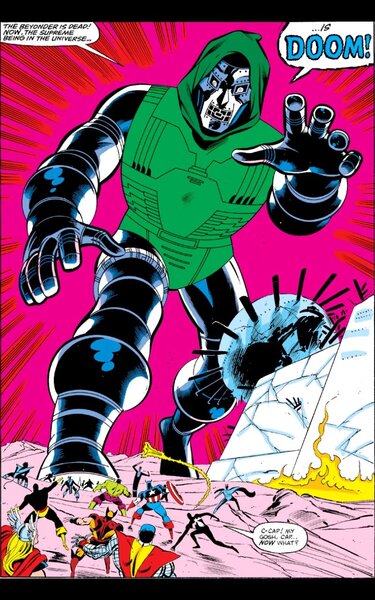Create a free profile to get unlimited access to exclusive videos, sweepstakes, and more!
An oral history of Marvel's Secret Wars, the iconic crossover that started it all
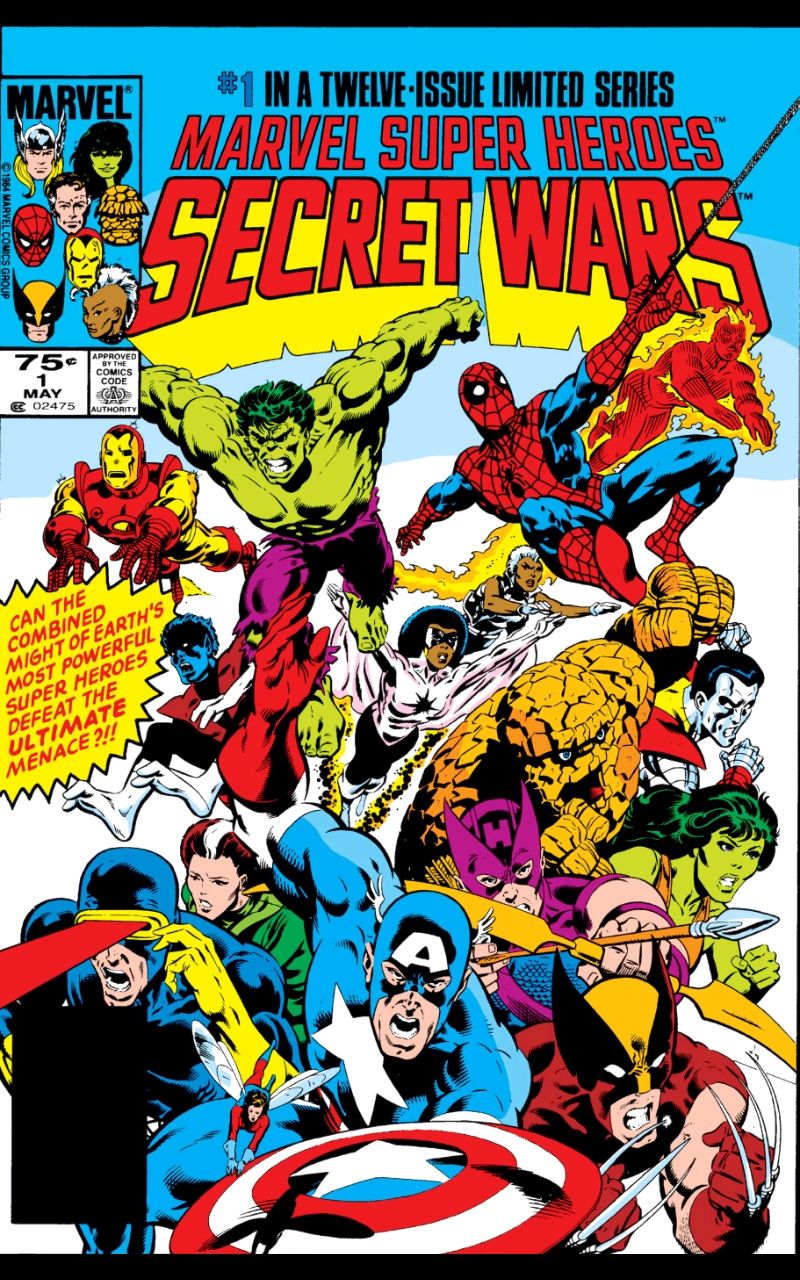
"There had been a few titles which had crossed over in the past. But nothing this ambitious had ever been attempted before in comics. A maxi-series, with tied-in continuity with other major titles and a line of toys to accompany the project? It sounded impossible to me when I first heard about it." – Bob Layton/Artist, Secret Wars
Secret Wars was Marvel Comics' first-ever line-wide event and became the foundation for every Infinity Gauntlet, Secret Invasion, and Civil War to come. It was a historic event that would reshape the entire comics industry — and ironically, no creator at Marvel wanted any part of it at the time.
To commemorate the 35th anniversary of this game-changing story, SYFY WIRE spoke with many of the principal artists and editors involved with the original series to reflect on the now-iconic comic event. Here are the people involved:
Jim Shooter: Marvel editor-in-chief, writer for Secret Wars
Tom DeFalco: Editor for Secret Wars, writer on The Amazing Spider-Man
Mike Zeck: Penciller on Secret Wars
John Beatty: Inker on Secret Wars
Ron Frenz: Penciler on The Amazing Spider-Man
Bob Budiansky: Editor on Fantastic Four in 1984
Nel Yomtov: Colorist on Secret Wars
Dan Larson: Toy historian
(Shooter, Zeck, and Beatty were unable to speak with SYFY WIRE, so we gathered their firsthand accounts from a talk they gave at a Florida comics convention in 2015.)
In the comic, the Secret Wars begin because a powerful cosmic entity summoned the heroes and villains of the Marvel universe to battle. In the real world, the wars were originally fought over — or on behalf of — toys.
DeFalco: In the late '70s, I freelanced for Marvel, and eventually they offered me a contract to be an exclusive writer for them. I joined the editorial staff in 1980 or 1981.
Shooter: Kenner toys decided they wanted to try a line of superhero toys, so they went to DC and they licensed the Justice League. Mattel toys found out about that, and they didn't want to be the only giant toy company that didn't have superheroes. We were the only game left in town, so they came to us.
DeFalco: I was the editor at Marvel working on the Spider-Man titles, and at a certain point, for a reason that still befuddles me, they promoted me to executive editor ... Among other things. I was dealing with special projects. I had worked with Hasbro on G.I. Joe, Transformers, and a number of other projects, and had also worked with a couple of the other toy companies.
Larson: Marvel was pretty deep in the toy promotion game, acting as the source for a lot of the character names and mythologies. There are Marvel comics for several toy brands, including Sectaurs, Crystar, Micronauts, Shogun Warriors, Pirates of Dark Water, ThunderCats, and Air Raiders (through their Star Comics imprint).
DeFalco: So when Mattel got in touch with us, it just seemed perfectly natural that I would end up working with them.
Larson: Mattel wanted to have a backup for Masters of the Universe just in case superheroes became the next big fad.
Shooter: When we had this meeting with our licensing people and Mattel people, they said people had heard about Spider-Man, but your average citizen on the street didn't know the Fantastic Four.
DeFalco: As we're setting everything up Mattel says to us, "We want you to produce a comic book to support the toy line." And at the time I remember laughing and saying, wait a minute, you got Spider-Man, The Hulk, Fantastic Four! Every month we do comic books to support these characters. They wanted to have something that reflected the name of their toy line.
Shooter: Mattel said, "Can you do some kind of big event that gets a lot of publicity, so we have something to base our marketing on?"
DeFalco: There were a lot of negotiations, and in the end we finally got Marvel Superheroes Secret Wars. Secret Wars was their idea. We were not thrilled with the name.
Now that the series had a name, all that they needed was a plot.
Shooter: In the fan mail, about 10 or 12 people a day would suggest that we have one giant storyline with all the major villains and all the major heroes in one story together.
DeFalco: A few years earlier we had done a comic book called The Contest of Champions which had a long, involved history. It had originally been started for the 1980 Olympics. But due to politics of that time [involving President Jimmy Carter and Russia's refusal to withdraw troops from Afghanistan], the U.S. pulled out of the games in protest. So Contest languished in a drawer for years.
But this was a project that editor Mark Grunewald had really cared about, so he decided to update the costumes and publish it as a three-issue limited series in 1982. To our surprise, it sold really well. When we decide to do Secret Wars, it was kind of based on that concept. It would be the top Marvel superheroes versus the top Marvel Supervillains.
Shooter: Some of it was dictated to us by Mattel. We had to have a headquarters so they could make a playset, and vehicles. We had a few limitations, but mostly we did what we want.
DeFalco: I remember that when we finally decided to do that book, we went around trying to get the best creative team we could. We asked Chris Claremont to write it and I forget who else. Every person that we approached told us that they were just not interested. Nobody wanted to work on a "toy book." I heard a lot of "It's not going to sell, I don't want to have anything to do with it."
I was getting kind of desperate. I remember at one point I was talking to Jim, who said, "I don't understand why no one wants to do this. This is a perfect chance to deal with all the major heroes and all the major villains and have a chance to really put your mark on them." I don't remember whether it was his or my idea, but since it was such a good one, I'll give him credit for it. And we decided he would write it.
Shooter: So I cooked up this crazy story. There were two groups. One was a collection of X-Men (plus Magneto), Avengers, and the Fantastic Four; the other featured Dr. Doom, Galactus, and other top Marvel villains. Both squads were deposited on an alien world created from bits and pieces of Earth and other planets. They were pitted against each other by the omnipotent Beyonder with the promise of an ultimate reward to the victor.
DeFalco: Mike Zeck, I think, had just finished his run on Captain America and was looking for something else to do.
Zeck: I really liked Captain America, but I had done three years on it, and that was kind of enough.
DeFalco: So I said, "Hey Mike, I've got a great assignment for you. It'll be terrific." Now, he had worked on a team book, Master of Kung Fu, so he asked, "Is this a team book? Team books are nightmares!" I said, "I don't know if you could call it a team book per se." Mike, aside from being a fabulous artist, is a great guy and a good friend, and he finally said yes.
Zeck: Captain America was also going to be in Secret Wars, so I was kind of leaving him but not leaving him. I was just following him into Secret Wars.
Beatty: I just remember when Mike called me and said there's something that's been offered to us. And we were busy working on Captain America and having a good time. This was going to mean leaving Cap, who was and still is one of my favorite heroes. This was going to be a 12-issue series, or we remain on Cap. So I know I told Mike, "I'm up for whatever you want to do, if you want to do this new series, I'm on it with you. If you want to stay on Cap, I'll be there."
DeFalco: There are all sorts of stories about Jim Shooter. Some are positive, some negative. As someone who's worked with writers, Jim Shooter really is a terrific writer. I can't speak for Zeck, but I think he was happy for the chance to work with a top-notch writer like Shooter.
DeFalco: I honestly don't remember why we decided to do 12 issues. I'll give you some possibilities — I'm a writer, so maybe I'm creating a rationale. We had the toy license for a year, so it made sense to do a 12-issue run. Also, I think that Shooter started to work on a storyline and came up with something that was just big enough to last for 12 issues.
Marvel was no stranger working with toy licenses, but those were all concepts and properties that existed in their own separate universes. Secret Wars was taking place in the Marvel Universe. It was also poised to have dramatic effects on all the characters involved. The early solution to this seemed to have bred bigger problems.
Shooter: [The events of] all 12 issues [of Secret Wars] technically fell between the December books and the January books. So I told all the writers to get your characters to Central Park at the end of December. Then they're going to vanish, and they're going to come back in January. And a lot of them will be a little different than when they left.
This minimized any disruption to any given title's ongoing story. On the other hand, if something dramatic happened to a character or team during the mini-series, readers wouldn't have the full story revealed to them for another some 11 months, when the limited series ended.
DeFalco: That was a basic logistical nightmare. When everybody came out, it was something different about every character. Spider-Man's costume, the Fantastic Four had a new lineup, The Hulk had, if I remember, a broken leg. We basically had to work with every creative team and work out what the effects of the difference were. Some things were imposed on them. Some things they suggested.
Budiansky: Any time a writer/editor team is asked to interrupt the normal flow of their book to allow another storyline to intrude upon it, it can create problems, but it can also create opportunities. Shaking up the Fantastic Four as a result of events in Secret Wars created some intrigue and excitement in the FF that might not have occurred otherwise.
DeFalco: I think John Byrne suggested that the Thing didn't come back and that they replaced him on the FF.
Budiansky: She-Hulk was strong like the Thing, so she was a good replacement in that sense, and I think John Byrne liked writing and drawing her.
DeFalco: I know that Shooter decided that Spider-Man is going to come back in a new costume. So that was imposed on the Spider-Man team.
Secret Wars is also famous for the rise of the black suit for Spider-Man that would eventually become one half of the character Venom.
Frenz: I was sent xeroxes of a shot that has never been published drawn by Mike Zeck of the new black costume. In my innocence, I said, is this a new villain or something? And they said, no, it's the costume. "Oh wonderful, I waited 25 years to get a chance to draw Spidey and right after I get there, he doesn't look like Spider-Man."
DeFalco: I was not involved with Spider-Man at the time we decided he was going to get a new costume. By that time I was actually writing the Spider-Man book, I wanted to make sure that my book was very tied into Secret Wars.
Frenz: Everybody thinks that with a new creative team they'd make this new costume this big selling point, and none of that was true. Amazing Spider-Man #252 was done by a complete fill-in crew. DeFalco scripted it over a plot by Roger Stern. I penciled it as a fill-in guy, Brett Breeding was not the regular inker at that point. Some of us became regulars, but that wasn't the case at the time.
DeFalco: Somehow word that Spider-Man was going to get a new costume leaked out to the fan press. We got massive protest about it. Everybody hated the idea, to the point that somebody from the mailroom came up, dropped a big bundle of mail on my desk, and glared at me and said, "Whatever you did, don't do it again!"
Frenz: Shooter came into Tom's office and said, "What issue are you introducing the black suit?" Tom said #252. Shooter said, "Fine, get rid of it in 253!!" We're taking a tremendous hit in the mail. And DeFalco was the one who argued that we really can't do that because it's not introduced until Issue 8 of Secret Wars.
DeFalco: So we'll run a story that coincides with the eighth issue of Secret Wars. That's when we'll get rid of the costume. Shooter then says, "Oh God, if this tanks the sales of Spider-Man, it's your butt, and you'll be the one who pays for it." I was like, "Hey, I don't care, I'm getting thrown off Spider-Man anyway, I didn't think this was a title I was going to last on."
DeFalco wound up writing Spider-Man for another three years.
DeFalco: Shows what I know. We kept pushing the black costume and Secret Wars, and our sales began to increase, which made the sales department very nervous. They were convinced the retail were ordering too many copies, going so far as to discourage retails from doing so. I remember somebody in sales coming in and saying, "You guys may be responsible for putting Marvel out of business!! When retailers get stuck with all these copies they'll never buy a Marvel Comic again."
Frenz: So that was the final consensus of how to handle the suit and actually get rid of it. The month after it debuted in Secret Wars. Now by the time ASM #259 came out people had seen it and the mail was overwhelmingly positive.
DeFalco: When ASM #252 came out Marvel sent me and Elliot Brown to California to direct market stores in a desperate attempt to help the retailers sell those books. We got there Friday afternoon, the day after the issues went on sale, and they were all sold out. The only copies they had were issues that people had brought back to the store.
Meanwhile, back on the main title, the 12 issues still had to be produced over the course of that year. Logistical issues aside, it was still a Herculean effort, one that Zeck would not be able to complete on his own. Enter creator Bob Layton, who would pinch-hit for three issues of the mini-series.
Layton: As in any war, there are volunteers and then there are draftees. I got drafted! At the time Secret Wars had begun production, I had just finished my second Hercules: Prince of Power mini-series and was in the process of developing a relaunch of Power Man and Iron Fist with my friend and collaborator Denys Cowan. When Mike started running into deadline problems, mainly from the sheer complexity of the series, I was asked to jump in and buy him some time since I had no regular monthly assignment at that moment. I was simply filling in for a very tired friend of mine.
By the end of the series, it was literally all hands on deck, as colorist on Secret Wars and once and future editor at Marvel Nel Yomtov recalled.
Yomtov: Early one evening, around 6 o'clock or so, I was in the offices, checking with the editors. From behind a voice called out: "Hey, Nel, hold on!" It was Tom, obviously a bit frazzled. At the time, Tom was second-in-command to Shooter. He was likely charged with the task of solving a daily industry problem: the lateness of books.
He explained to me that Secret Wars #11 was desperately late and needed to be colored pronto — like overnight. "Would I take on the job?" he asked. "It pays rate-and-a-half!" I'd done overnighters before, but I just wasn't up to this one. Tom was persistent, gently pleading his case, but persistent nonetheless. Finally, I acquiesced and agreed to take the job. (Tom could be quite the charmer, and his smile and easy manner made him a difficult guy to refuse!)
The toy line that prompted Secret Wars, meanwhile, had hurdles of its own, and at the end of the day the comic outshone the action figures.
Layton: I was asked to come back and design the action figures for Mattel once the series was near completion. There were design limitations that had to be addressed to make the toy line work from a manufacturing standpoint, so they brought me in one last time to accommodate those issues.
Larson: Technically two waves were released in North America. The first wave was eight figures. The second wave would have been eight as well, but sales in the market weren't great, so only five of the eight figures made it to the shelves. The remaining three figures were only released in international markets. Those three figures are the most valuable today due to lower production numbers and fewer samples available in the U.S. Secret Wars really had the comic book crossover series, and that was it.
The impact of Secret Wars is clearer than ever decades later. Without Secret Wars, there would be no Avengers: Endgame. The series was a Herculean effort, and a worthwhile one.
DeFalco: Working on a project like Secret Wars was like running a super marathon. So it's hard to say that you enjoyed it, or you had a good time doing it. But you know, here it is, 35 years later and people are still talking about it. So we must have done something right?
